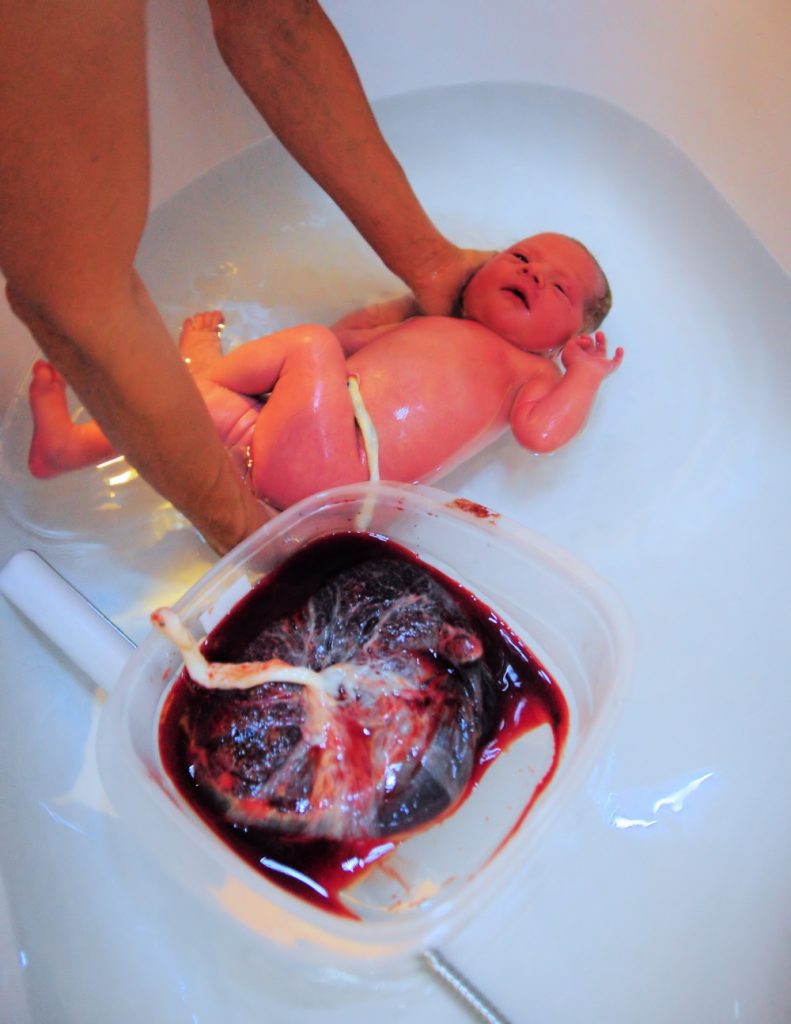What is a Lotus Birth?
In Australia it has been traditional for the cord of newborn babies to be cut and clamped immediately at birth, separating the baby from the placenta. But in recent years the Lotus Birth has been gaining popularity.
A Lotus Birth means that rather than cutting the umbilical cord at delivery, the placenta remains attached to the baby after delivery until it separates naturally, usually anywhere from 3 to 10 days after birth.
What are the Benefits of a Lotus Birth
Whilst there have not been sufficient studies to say definitively what the benefits of a Lotus Birth are, there is plenty of positive anecdotal evidence. It has been observed by parents that:
- Babies who experienced Lotus Birth are calmer and more peaceful than those who did not. This is thought to be because of the slower transition from womb to world.
- Since the cord is not cut the mother and baby stay connected for longer once baby is delivered, which provides very special bonding time.
- The blood and nutrients remaining in the placenta at delivery continue to transfer to the baby, which increases their blood volume and is thought to improve baby’s immune system.
What Happens with the Placenta?
Once the placenta has been delivered and the cord has stopped pulsing there are a few important steps to follow:
- The placenta should be checked to ensure it is whole, then washed carefully in warm water to remove any external debris like blood, then left to drain in a colander or sieve.
- Once the placenta is dry – this may take up to 24 hours – gently pat it with a clean towel to ensure all moisture is removed.
- You may then wish to cover the placenta in salt or herbs like rosemary, lavender and lemon myrtle, wrap it in clean muslin and put it in a bag.
- The cord can be left bare, or wrapped in cotton, muslin or silk.
- It is important that you don’t put tension on the umbilical cord, as within a short time it will dry out and become brittle and may tear or snap. Many parents like to swaddle the placenta with the baby to ensure the cord is not put under any strain.
- The wrappings should be changed daily, and fresh salt or herbs applied
A Few Pro Tips
- Baby can be bathed as normal, but take care not to get the placenta wet.
- Be careful of the placenta when handling and feeding baby. Swaddling the placenta with baby can help with this.
- Don’t keep the placenta in a plastic bag or tub as it needs to dry out, so cottons and muslins are recommended
- Some people say there is a ‘musty’ smell about the placenta. The use of herbs and salt will help alleviate this.
- Beautiful herbs and placenta bags and kits can be bought from Blissful Herbs or you can make up your own.
- Dress baby in clothes that won’t interfere with the cord – anything lose that buttons up the front, leaving the buttons open around the umbilical cord site
- Most Doula’s are experienced with the care and management of the placenta in a Lotus Birth, so if you would like to have one, but feel nervous, you might like to consider making a doula part of your postnatal team.
- When the placenta naturally falls away from the baby you might like to bury the placenta in its bag somewhere special, along with a plant or tree.
Are There Any Risks?
If the placenta is handled properly there is very little risk. However, once the placenta has been delivered and the blood stops circulating it is essentially dead tissue, and there can be risk of infection. The risk of infection at the umbilical site is present whether in a normal ‘clamp and cut’ or a lotus birth, so washing your hands and keeping the site clean and dry is essential.
Things to look out for include:
- Swelling or redness at the sight of the umbilical cord
- High temperature
- Poor sleeping and/or feeding in baby
If you notice any of these symptoms you should notify your health practitioner immediately.
A Word About Delayed Cord Clamping
If a Lotus Birth doesn’t sound like something you would like to try, you might consider Delayed Cord Clamping. This simply means, rather than cutting and clamping the umbilical cord immediately you wait until the cord has stopped pulsing. This generally takes no more than a few minutes.
The benefit to delayed cord clamping is the placental blood which is in the cord at time of birth continues to flow into your baby, helping to increase their blood supply and all the nutrients supplied by the placenta.
If you would like to learn more about Lotus Births, or have a chat about having a Doula on your birthing team can help, please give me a call on 0422 258 771, or contact me:
